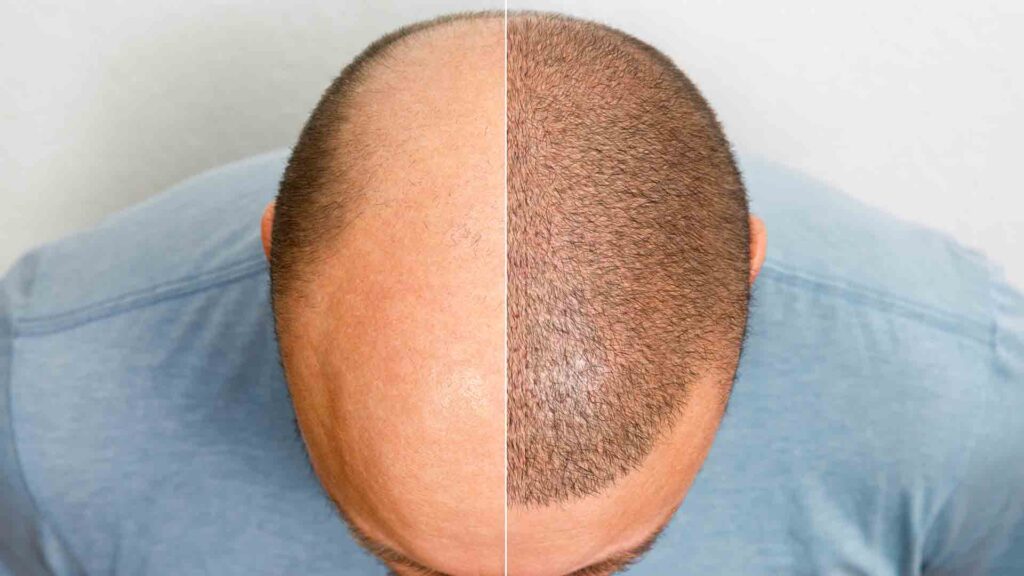Hair transplantation is a surgical procedure to restore a person’s hair loss. This process is transferred to the hairy areas using various methods using the roots of the person’s own hair. Hair transplantation is usually done under anesthesia and may take several hours.
The process includes the following steps:
Anesthesia: Before the procedure, the doctor will administer anesthesia so that the patient will not feel pain during the procedure.
Removal of grafts: Hair follicles to be used in hair transplantation are usually taken from the back of the person. This area usually contains less hair loss and healthier hair follicles.
Placement of grafts: Hair follicles are transplanted to bald areas. This procedure is usually done using microsurgical needles.
Recovery process: After hair transplantation, the patient will use pain medication for a few days and avoid touching the hairy areas. After hair transplantation, there may be slight swelling and bruising in the hairy areas. This is normal and will pass in a few days. After hair transplantation, it may take several months for the hair to regrow.
Which methods are used for hair transplantation?

Hair transplantation can be done with several different methods. The most common methods are:
FUE (Follicular Unit Extraction): In this method, the hair follicles of the person are taken one by one and transplanted to the balding areas. In the FUE method, no incision is made and the grafts are often placed with microsurgical needles. This method leaves less scars and the healing process is faster.
FUT (Follicular Unit Transplantation): This method involves taking a part of the person’s hair follicles and transplanting them to the balding areas. In the FUT method, grafts are usually taken and placed through an incision. This method allows more grafts to be taken, but leaves more scars and the healing process is slower.
DHI (Direct Hair Implantation): This method is similar to the FUE method, but the grafts are placed with a larger needle. In the DHI method, no incision is made during the placement of the grafts and therefore will not leave any scars. This method provides a faster and more natural appearance, but is more expensive and less grafts can be taken.
What is the most important element for hair transplantation?

The success and results of hair transplantation depend on many factors. But the most important element is the experience and abilities of the doctor. It is important that the doctor who will perform the hair transplant operation is an expert and experienced in the field of hair transplantation. It should be seen that the doctor prioritizes the aesthetic results in the hair transplantation process and produces suitable solutions for hair loss problems. It is also important that the doctor has the knowledge and experience to evaluate whether the person is suitable for hair transplantation and to choose the most appropriate method. The choice of the doctor can be considered as the most important factor in terms of the success of the hair transplant procedure.
Does the transplanted hair fall out after hair transplantation?
It is normal for the transplanted hair to shed or fall out within the first few weeks after the hair transplantation procedure. This is known as “shock loss.” Shock loss is a temporary condition, and the hair will typically grow back within a few months. After the initial shedding, the transplanted hair should grow back and behave like your natural hair. It is important to follow the post-operative instructions provided by your surgeon to ensure the best possible results. This may include avoiding certain activities, such as vigorous exercise or exposing the transplanted area to direct sunlight, and using prescribed medications as directed.
Hair transplanted after hair transplantation may fall out like normal hair. However, the rate of hair loss after hair transplantation is lower than the rate of shedding of normal hair. In hair transplantation, hair follicles are taken from healthy and strong areas and transplanted to bald areas. Therefore, the shedding rate of transplanted hair is less than the shedding rate of normal hair. After hair transplantation, the growth rate of the transplanted hair is similar to the growth rate of normal hair. After hair transplantation, regular care is recommended to obtain a beautiful appearance of the transplanted hair.
To whom can hair transplantation be applied?

Hair transplantation can be applied to anyone with hair loss or thinning hair. This procedure is mostly done in men, but it can also be done in women. This procedure is not recommended for people with certain health conditions or who are taking certain medications. To find out if hair transplantation is an appropriate treatment option, you should consult with a dermatologist or plastic surgeon. They will evaluate your health status and the condition of your scalp and determine whether it is suitable for hair transplantation.
Am I a suitable candidate for hair transplantation?
Whether you are a suitable candidate for hair transplantation can only be determined by a dermatologist or plastic surgeon. Many factors will be considered when evaluating your suitability for the procedure. These may include the cause of your hair loss, the condition of your scalp, your overall health, and your expectations. It is not possible to determine if you are a suitable candidate for hair transplantation without a thorough evaluation by a healthcare professional. After evaluating your suitability for the procedure, a dermatologist or plastic surgeon will be able to recommend the most suitable treatment option for you.




0 Comments